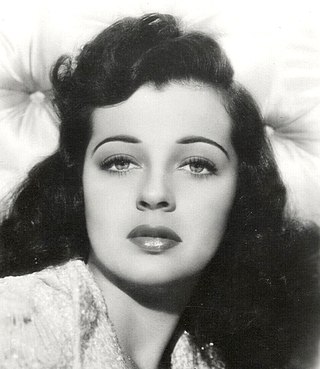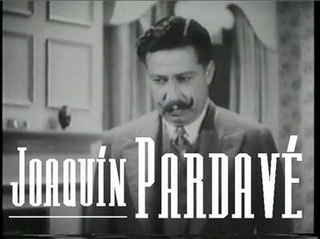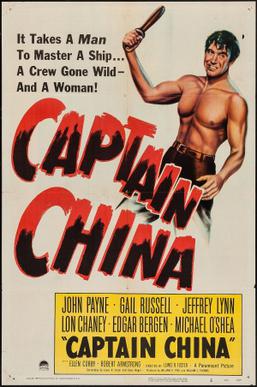Related Research Articles

Gail Russell was an American film and television actress.

Sterling Walter Hayden was an American actor, author, sailor, and Marine. A leading man for most of his career, he specialized in Westerns and film noir throughout the 1950s, in films such as John Huston's The Asphalt Jungle (1950), Nicholas Ray's Johnny Guitar (1954), and Stanley Kubrick's The Killing (1956). In the 1960s, he became noted for supporting roles, perhaps most memorably as General Jack D. Ripper in Kubrick's Dr. Strangelove or: How I Learned to Stop Worrying and Love the Bomb (1964).

Rhonda Fleming was an American film and television actress and singer. She acted in more than 40 films, mostly in the 1940s and 1950s, and became renowned as one of the most glamorous actresses of her day, nicknamed the "Queen of Technicolor" because she photographed so well in that medium.

John Howard Payne was an American film actor who is mainly remembered from film noir crime stories and 20th Century Fox musical films, and for his leading roles in Miracle on 34th Street and the NBC Western television series The Restless Gun.

Germán Genaro Cipriano Teodoro Gómez Valdés y Castillo, known professionally as Tin-Tan, was a Mexican actor, singer and comedian who was born in Mexico City but was raised and began his career in Ciudad Juarez, Chihuahua. He often displayed the pachuco dress and employed pachuco slang in many of his movies, some with his brothers Manuel "El Loco" Valdés and Ramón Valdés. He made the language of the border Mexican, known in Spanish as fronterizos pachucos, famous in Mexico. A "caló" based in Spanglish, it was a mixture of Spanish and English in speech based on that of Mexicans on the Mexican side of the border, specifically Ciudad Juarez.

Oliver Hazard Perry La Farge II was an American writer and anthropologist. In 1925 he explored early Olmec sites in Mexico, and later studied additional sites in Central America and the American Southwest. In addition to more than 15 scholarly works, mostly about Native Americans, he wrote several novels, including the Pulitzer Prize-winning Laughing Boy (1929). La Farge also wrote and published short stories, in magazines such as The New Yorker and Esquire.

Joaquín Pardavé Arce was a Mexican film actor, director, songwriter and screenwriter of the Golden Age of Mexican cinema. He was best known for starring and directing various comedy films during the 1940s. In some of them, Pardavé paired with one of Mexico's most famous actresses, Sara García. The films in which they starred are El baisano Jalil, El barchante Neguib, El ropavejero, and La familia Pérez. These actors had on-screen chemistry together, and are both noted for playing a wide variety of comic characters from Lebanese foreigners to middle-class Mexicans.
Leopoldo Torres Ríos was an Argentine film director and screenwriter. His brother Carlos Torres Ríos was a notable cinematographer. His son was the film director and screenwriter Leopoldo Torre Nilsson.
Pine-Thomas Productions was a prolific B-picture unit of Paramount Pictures from 1940–1957, producing 81 films. Co-producers William H. Pine and William C. Thomas were known as the "Dollar Bills" because none of their economically made films ever lost money. "We don't want to make million dollar pictures," they said. "We just want to make a million dollars."

Dennis Moore was an American actor who specialized in Western films and film serials.

The Beautiful Blonde from Bashful Bend is a 1949 romantic comedy Western film starring Betty Grable and featuring Cesar Romero and Rudy Vallee. It was directed by Preston Sturges and written by him based on a story by Earl Felton.

Harry V. Cheshire, originally from Emporia, Kansas, was an American character actor who appeared in over 100 films, mostly playing small roles. He was also a stage actor and performed on a St. Louis radio station's musical program. He may be best known for playing Judge Ben Wiley on Buffalo Bill, Jr.

The Lawless is a 1950 American film noir directed by Joseph Losey and featuring Macdonald Carey, Gail Russell and Johnny Sands.

Albuquerque is a 1948 American Cinecolor western film directed by Ray Enright and starring Randolph Scott, Barbara Britton, George "Gabby" Hayes, and Lon Chaney Jr. Based on the novel Dead Freight for Piute by Luke Short, with a screenplay by Gene Lewis and Clarence Upson Young, the film is about a man who is recruited by his corrupt uncle to inherit his freight-hauling empire in the southwest, and who eventually defects to his uncle's honest business rival.
Jesse Graves (1879–1949), also known as Jessie Graves or Jesse A. Graves, was an American character actor of the 1930s and 1940s. During his career he appeared in over 100 films. Some of the more notable include: After the Thin Man in 1936, which stars William Powell, Myrna Loy, and James Stewart; 1938's Jezebel with Bette Davis, Henry Fonda, and George Brent; the Mickey Rooney version of The Adventures of Huckleberry Finn (1939); Frank Capra's 1939 political comedy-drama, Mr. Smith Goes to Washington, starring James Stewart and Jean Arthur; the Orson Welles classic, Citizen Kane (1941); the George Gershwin biopic, Rhapsody in Blue (1945); and the 1948 Spencer Tracy and Katharine Hepburn romantic comedy, State of the Union. His final film was the 1949 western, El Paso, starring John Payne and Gail Russell. As a Black American during this era, most of his roles were as butlers, redcaps, porters, waiters and other servant positions.

Fernando César Ochoa was an actor from Argentina who appeared on radio, in films and on TV.

Tripoli is a 1950 American adventure film directed by Will Price and written by Winston Miller. The film is a fictionalized account of the Battle of Derna at Derna, a coastal town in modern eastern Libya in April 1805 against Tripoli, one of the four Barbary states in North Africa and stars John Payne, Maureen O'Hara, Howard Da Silva, Phillip Reed, Grant Withers, Lowell Gilmore and Connie Gilchrist. The film was released on November 9, 1950, by Paramount Pictures. The film was re-released by Citation Films Inc. and retitled The First Marines.

Captain China is a 1950 American adventure film directed by Lewis R. Foster and written by Lewis R. Foster and Gwen Bagni. The film stars John Payne, Gail Russell, Jeffrey Lynn, Lon Chaney Jr., Edgar Bergen, Michael O'Shea and Ellen Corby. The film was released on February 2, 1950, by Paramount Pictures.

Shaggy is a 1948 American drama film directed by Robert Emmett Tansey, written by Maxwell Shane and filmed in Cinecolor. The film stars Brenda Joyce, Georgie Nokes, Robert Shayne, Jody Gilbert, Ralph Sanford and Alex Frazer. The film was released on June 11, 1948 by Paramount Pictures.

Disaster is a 1948 American drama film directed by William H. Pine and written by Thomas Ahearn. The film stars Richard Denning, Trudy Marshall, Damian O'Flynn, Will Wright, James Millican and Jack Lambert. The film was released on December 3, 1948, by Paramount Pictures.
References
- 1 2 El Paso at the AFI Catalog of Feature Films
- 1 2 3 4 Wood, Thomas (October 17, 1948). "ANTE UPPED FOR PINE AND THOMAS". New York Times. p. X5.
- ↑ "Top Grossers of 1949". Variety. January 4, 1950. p. 59.
- ↑ Crowther, Bosley (January 29, 1941). "Movie Review: El Paso". NY Times. Retrieved August 21, 2012.
- ↑ "At the Imperial / Colorful El Paso Boasts Thrills Plus Excellent Star Cast" (The News and Eastern Townships Advocate, June 2nd, 1949, Page Fourteen)
- ↑ "It's First Western For Payne" (The Deseret News, November 18, 1948, p.F-6)
- ↑ DRAMA AND FILM: Pine and Thomas Will Screen-Glorify El Paso Schallert, Edwin. Los Angeles Times July 30, 1947: A7.
- ↑ Pine-Thomas Group to Shoot New Films Los Angeles Times September 5, 1948: D3.
- ↑ "Pine-Thomas Continue 3 'Medium' Pix A Year". Variety. June 22, 1949. p. 7.
- ↑ Crowther, Bosley (March 24, 1949). "THE SCREEN: Just Pine and Thomas". The New York Times . p. 35.